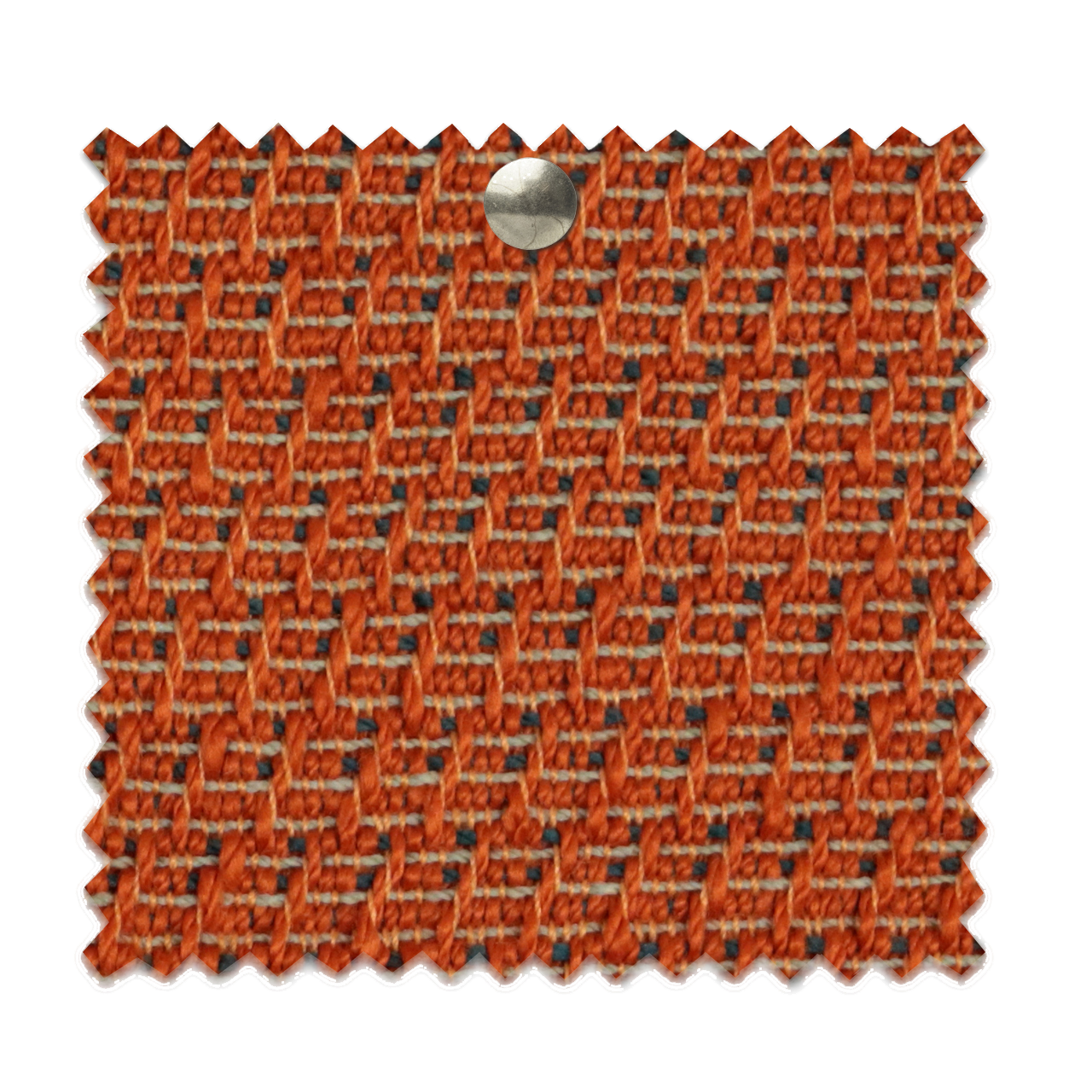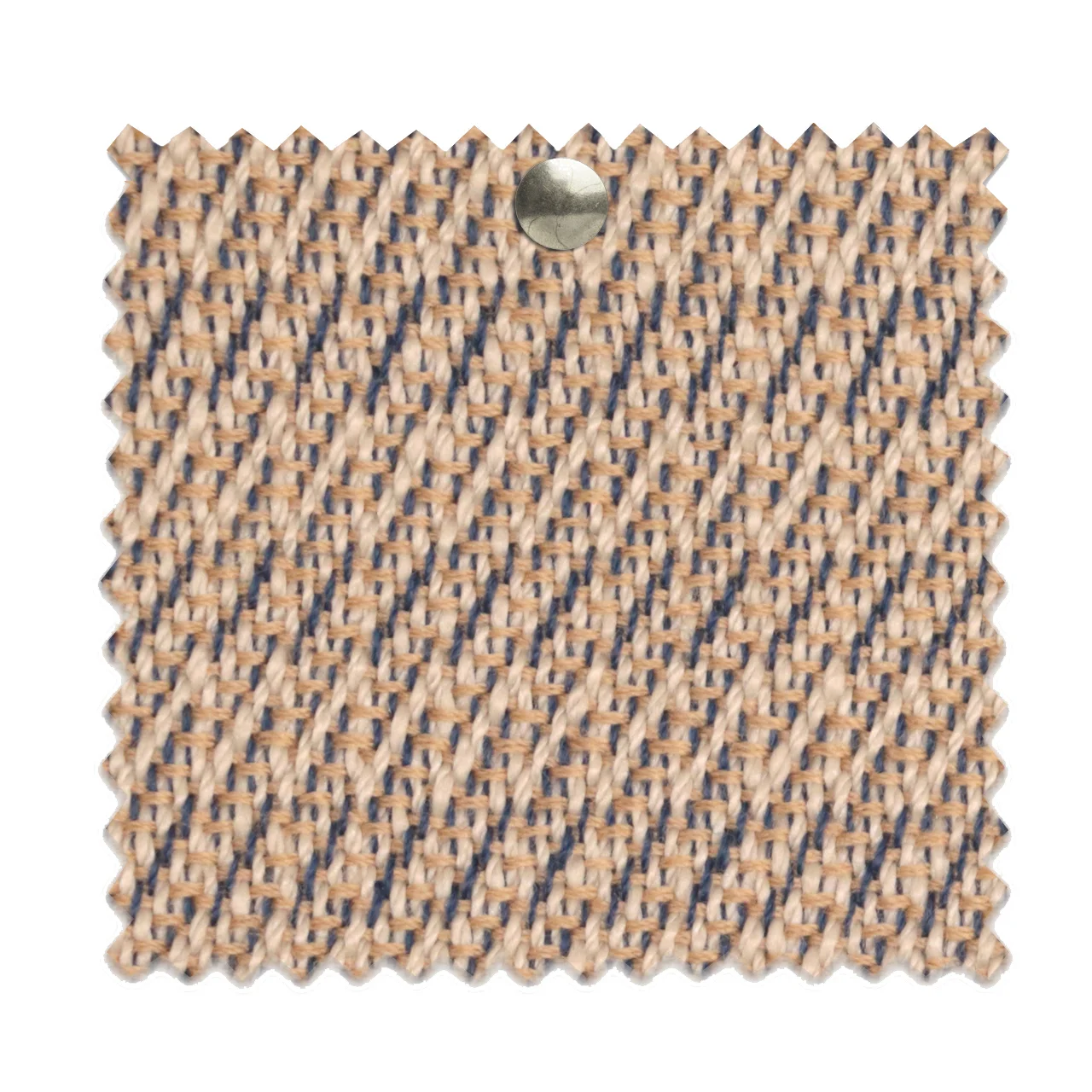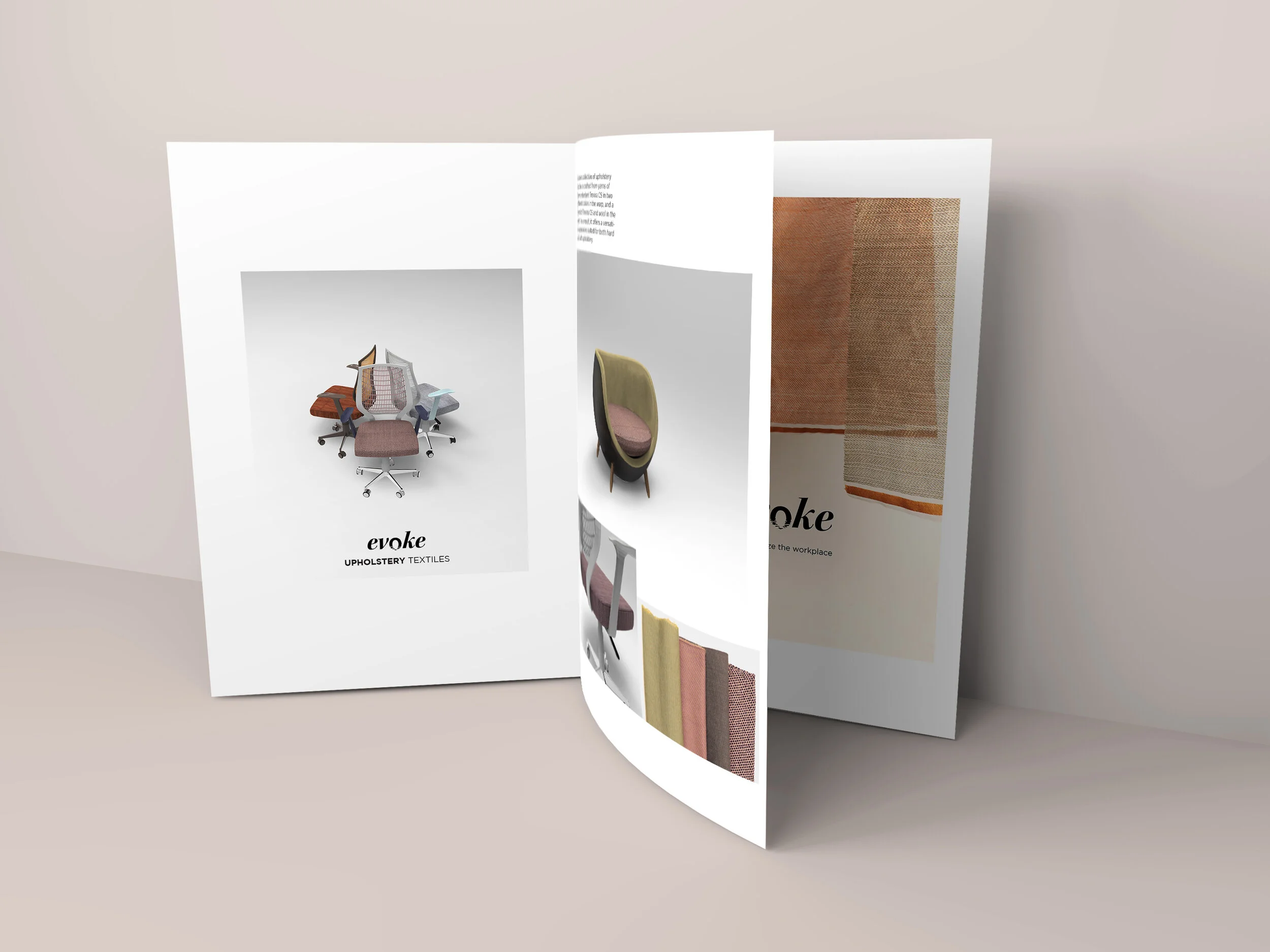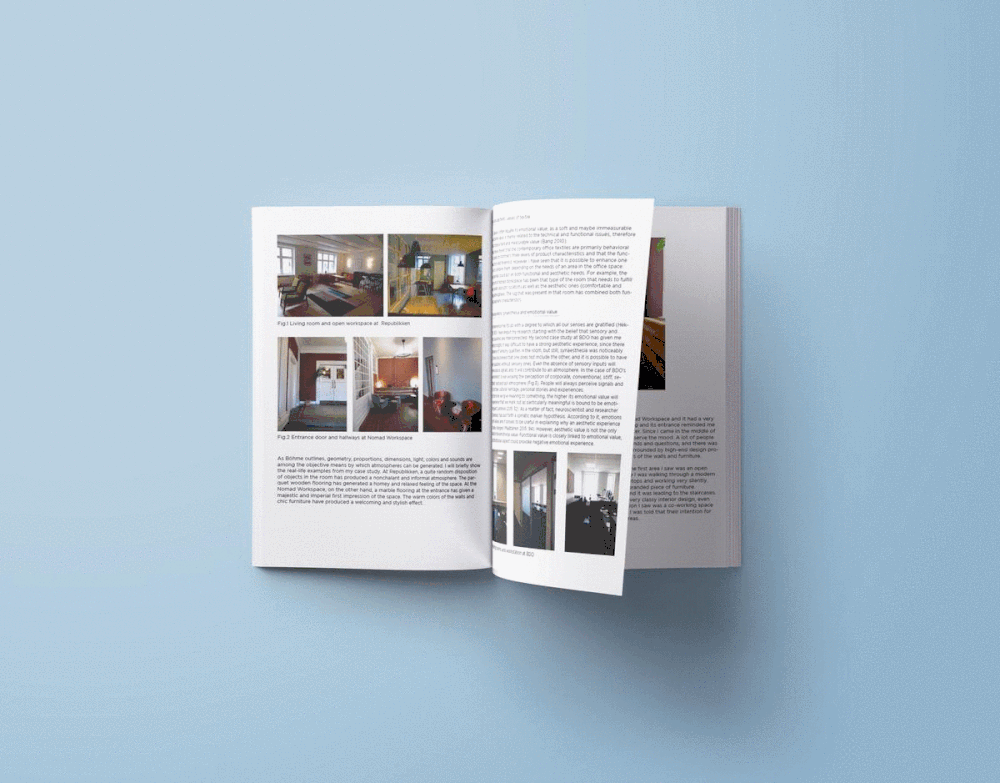Evoke
TEXTILE COLLECTION FOR THE CONTEMPORARY OFFICE INTERIOR
Focusing on a concept-driven design that can make a meaning perceptible and creating the collection of panel curtains and upholstery textiles that could be applied to the different types of the working environment.
As we move toward the digital era, it is my duty as a designer to argue upon the need to embrace something physical and sensuous, such as textiles, in the environment inhabited by people that produce most goods and services with their mind, instead of their body. The offices and workplaces that offer little sensory stimulation are likened to sensory deprivation, which can result in apathy, anxiety, and depression. Considering the pressure exerted by the new digital era, the discovery of perceiving the atmosphere through our ‘bodily presence’, as it operates in the realm of the senses, is of great importance.
There are three levels of work incorporated in the collection:
Visible process of change: through the different expressions of light/shadow and their movement creating a different expression of textile and atmosphere in the room.
Synaesthesia: through colors, forms, and shapes to evoke concrete or abstract mental images and feelings
Tactility: to stimulate senses through shapes, colors, and textures
RESEARCH AND CONCEPT DEVELOPMENT/CASE STUDIES/TEXTILE COLLECTION DESIGN AND PRODUCTION/CREATIVE DIRECTION/VISUAL IDENTITY
Office case study: Repubbliken (Copenhagen), Nomad Workspace (Copenhagen), BDO (Kolding)
How might I design a textile collection that will focus on the functional features of the textiles, while transcending them by stimulating people’s sensory abilities within the visual and tactile domain?
Crispy autumn | Curtain and upholstery textiles
Beneath the ice | Curtain and upholstery textiles
Ambrosial hour | Curtain and upholstery textiles
Textiles play a crucial role in the way we perceive the space. They interact with other materials in the interior and have ability to tailor the atmosphere through their sensory qualities. This can create a space that can affect us as cold, warm, uplifting cozy, elegant, serious, etc.
The curtains act as a filter creating a game of the light and shadow and by doing so, they affect the overall mood that prevails in the room and give people engaging moments in their daily surroundings.
THE NOTION OF ATMOSPHERE
We use the word ‘atmosphere’ daily. It describes the pervading tone or mood of a place or situation. Therefore, it operates on a hidden level, almost like an aura that cannot be physically perceived, but it can be felt emotionally quite profoundly. The concept of atmosphere is particularly related to the space, therefore it has a lot to offer to the realm of architecture, which is defined as a spacial art. We cannot ‘’measure’’ the atmosphere in the interior like we measure, for instance, a ceiling height of the room. It is associated with the emotional tone of the space in interior setting. Strangely enough, it has a quasi-objective character.
‘’Scenography would be meaningless if each theatregoer only
perceived something subjective’’
Gernot Böhme
Table of content:
Motivators | Objectives and problem statement | Outline | Atmosphere and synaesthesia | Emotional value | Relating emotional value to aesthetic experience | Review of the theory and research strategy | Case studies | Discussion of the case studies in relation to the theories
(Chapter preview)
CORRELATING THE CONCEPT OF ATMOSPHERE TO THE 4TH INDUSTRIAL REVOLUTION
The 4th industrial revolution is a term invented by Klaus Schwab, a founder and executive chairman of the World Economic Forum. It is characterized by a fusion of technologies that is blurring the lines between the physical, digital, and biological spheres (Min Xu, Jeanne M. David, Suk Hi Kim, 2018). Compared to previous industrial revolutions, the Fourth one is characterized by workers that produce most goods and services with their mind, instead of their body. Following Böhme’s emphasis on ‘bodily presence’ in perceiving the atmosphere, the idea to experience one’s own corporeality demonstrates that ‘’the need to feel one’s bodily presence is at once the need to feel one’s own liveliness, to feel vitality’’(Böhme 2013).
‘’Significant architecture makes us experience ourselves as complete embodied and spiritual beings. In fact, this is the great function of all meaningful art’’
Juhani Pallasmaa
Here is the important question: How to create an emotional correspondence between interior setting and people who inhabit the space, as we move towards in digital age? We need to take the action and discuss how the age of telecommunications and virtual realms can affect our human experience of the world is. After all, “there is a tremendous difference between designing for function and designing for humans”(Cooper, 2004).
‘’The single word that will drive the future is ‘emotion’.
It is the hidden force within every major trend’’
Patrick Dixon
Many future forecasts have the idea of under-stimulation of our sensory system in the next few decades. But, alienation from our senses led to emotional detachment as well. ‘’When we experience them less and less, we become unmoved and cold” (Mick Csaky, 1979). However, this new accent on the sensory realm will bring new trends and major changes in the industry. As Li Edelkoort claims, ’’this forecast heralds the coming of a major new industry, not only in clothing but also in interiors, design, gardening, hardware, retail, consumer products and communications’’.









































